Izzzzzzzzzzy
Regular
can’t wait for Christmas and brn being at $2
I searched 'neuromorphic' on the Synaptics website and this popped up. I'm not sure if it hints at us or not. We aren't named but Synaptics founders recognised neural network computation as the future. Maybe in 2019 when this was written there was already contact with Brainchip.
Thoughts are with your family at this mega stressful time, Fred. You feel so hopeless. It does highlight the fact that family really is everything. Hope this situation has great outcomes, mate.I am hoping Akida will be put into good use in medical diagnosis. As great as the multitude of applications are i think it finding patterns in medical imaging and other tests so much faster than the human eye can will be life changing for many. Having my grandson in ICU at present in an induced coma, and all the doctors doing so many tests, and still can only come up with some sort of brain infection. If only Akida could scan all the CT and MRI scans accurately and quickly a diagnosis might be made quicker than a dozen doctors arguing over there interpretation. One day hopefully
A.I. is already doing these kinds of things better than humans.I am hoping Akida will be put into good use in medical diagnosis. As great as the multitude of applications are i think it finding patterns in medical imaging and other tests so much faster than the human eye can will be life changing for many. Having my grandson in ICU at present in an induced coma, and all the doctors doing so many tests, and still can only come up with some sort of brain infection. If only Akida could scan all the CT and MRI scans accurately and quickly a diagnosis might be made quicker than a dozen doctors arguing over there interpretation. One day hopefully

Well, on a first go through, I didn't find any applicable Synaptics patents, but I did find this useful device:Could this be?…..Already shipping.
Press Release | Hisense Selects Synaptics’ DBM10L Processor For First AI-Enabled Always-On Voice Remote Control | Synaptics
AMSTERDAM, The Netherlands, Sept.www.synaptics.com
Renesas merged with the semiconductor operations of fellow Japanese company NEC Electronics to further expand its footprintA short article on Renesas at the end of the article it states that TOYOTA AND TELSA are Key customers.....
HOME/CAR NEWS
Inside the Suppliers: Renesas
The semiconductor shortage is crunching supply of new cars and forcing manufacturers to sell models with a pared-back feature set. Renesas is one of the companies hit hardest by the ongoing crisis.
11 SECONDS AGO
2 COMMENTS
PREVIOUS NEWS
Is Tesla modifying cars and software specifically for crash testing?
17 HOURS AGO
229 COMMENTS
Don't get ripped off, find out what others have paid

GET REPORT

Vivek Shah
CONTRIBUTOR
PUBLISHED
11 September 2022, 7:00 am
With interiors featuring large displays, and increasingly advanced autonomous driving and active safety technologies, the cars of today (and the future) are not far from being supercomputers on wheels.
Modern cars use semiconductors to enable not only advanced technologies like those described above, but also everything from air-conditioning to scrolling indicators.
This reliance on semiconductors, combined with a global shortage borne of COVID and war in Ukraine, is why some cars are being sold with a stripped-back feature set, or face lengthy delays to arrive locally.
Japanese company Renesas is one of the largest semiconductor suppliers for the global automotive industry, and consequently one of the companies at the centre of the current semiconductor pinch.
Brief history
While Renesas is a relatively young company that was established in April 2003, it can trace its heritage back to Mitsubishi and Hitachi.
Knowledge is the key to a strong negotiation, so we suggest that you spend a few minutes researching the actual prices people have been recently paying at dealerships using services such as PriceMyCar or forums and social media.
In 2002, Mitsubishi Electric and Hitachi decided to consolidate their semiconductor businesses (excluding their DRAM, or dynamic random access memory business, which was merged separately) into a company called Renesas.
Hitachi would initially have a 55 per cent stake in the new firm, with Mitsubishi controlling the remaining 45 per cent of shares.
Renesas is a portmanteau of Renaissance Semiconductor for Advanced Solutions, which doesn’t say much about the rationale for its existence – to generate economies of scale by combining similar operations, improving profitability in the process.
With an annual sales revenue of approximately $US7 billion in the 2003 fiscal year, Renesas immediately became one of the largest semiconductor companies in the world. In 2010, Renesas merged with the semiconductor operations of fellow Japanese company NEC Electronics to further expand its footprint, which brought about a minor name change to Renesas Electronics Corporation (from the former Renesas Technology Corporation).
As with many other Japanese carmakers and suppliers, the Japanese earthquakes in 2011 hit Renesas hard. Although the company’s factory in Naka (Ibaraki Prefecture) was designed to be earthquake resistant, several pieces of valuable equipment were damaged, and estimates suggested it would take six months before the factory could be restored to its pre-earthquake output.
Others Have Viewed

MG HS
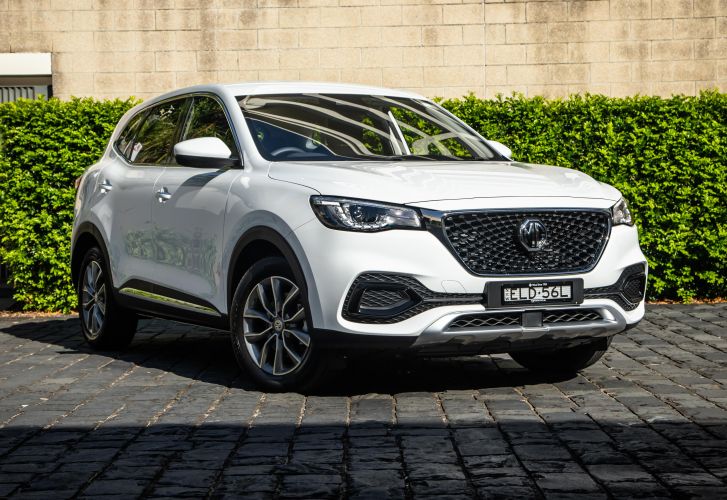
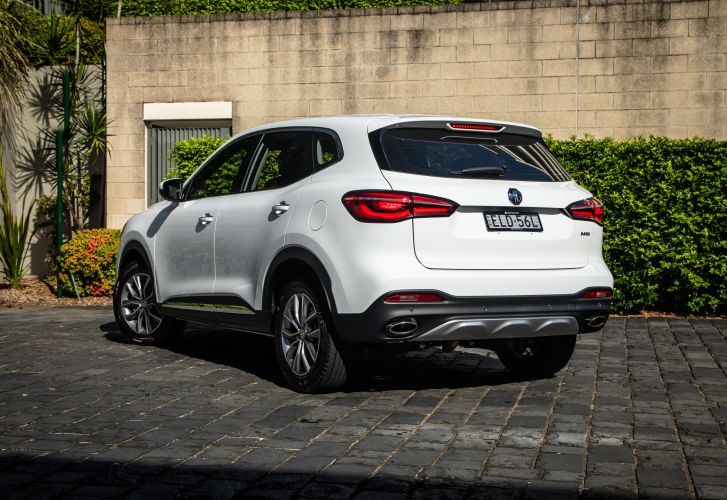
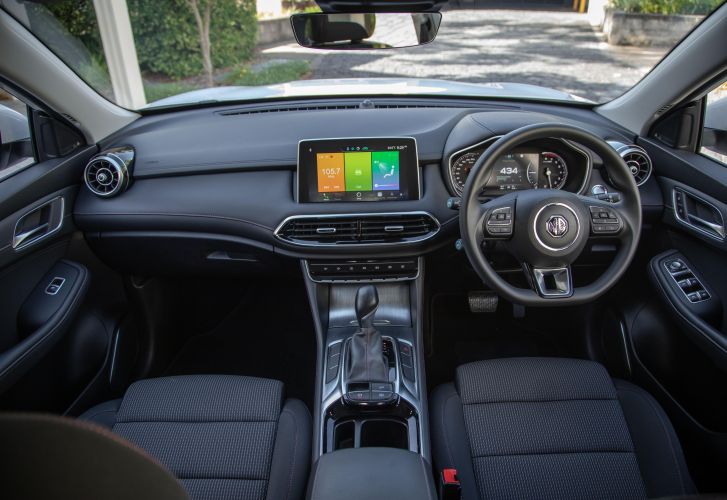
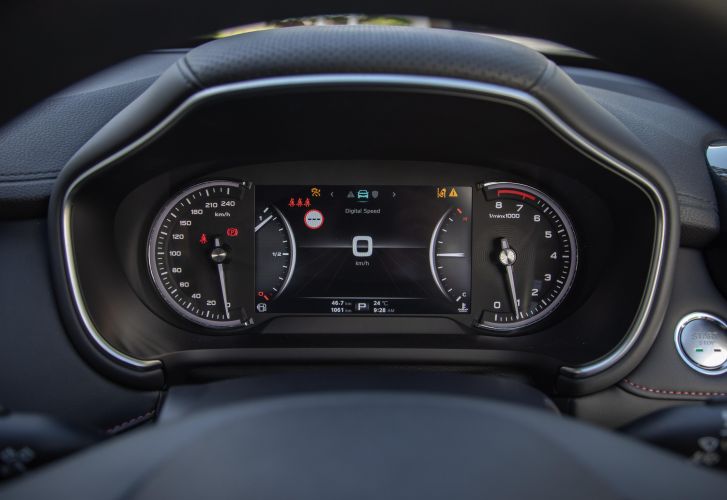
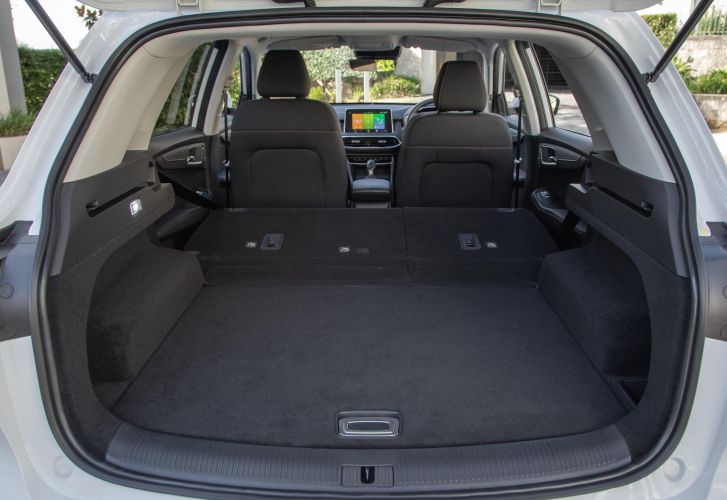
7.9
SPEC SHEETTEST DRIVE
However, with the assistance of Toyota engineers who devised a ‘big room method’ that made it clear how recovery efforts were progressing, and other outside help, the company was able to restart production ahead of schedule.
More importantly, Renesas claimed it developed an improved business continuity plan that allowed it to better weather natural disasters (such as earthquakes in 2016), and set it up to manage its business during the COVID-19 pandemic.
Renesas has been at the heart of the global semiconductor shortage. CEO Hidetoshi Shibata has claimed while there is adequate production capacity to build enough semiconductors, one of the reasons for the pinch are shortages in the mining and supply of raw materials.
This has caused a flow-on effect in the production of certain types of semiconductors, especially those that use 40 nanometre transistors (processors in modern smartphones generally use 5nm) such as power management chips, and chips that process mixed digital and analogue signals.
Renesas is a publicly listed company on the Tokyo Stock Exchange, with a market capitalisation of approximately US$17.8 billion.
Type of products produced
Renesas’ business extends beyond the automotive industry, reaching consumer electronics, along with the industrial and healthcare sectors. In the automotive space, however, Renesas primarily makes automotive microcontroller units (MCUs) and system-on-chip (SoC) products.
Renesas claims its ‘R-Car’ automotive SoC is designed for the ‘next generation of automotive computing for the age of autonomous vehicles’, and can power everything from advanced driver assistance systems to digital instrument clusters.
For example, Renesas claims its R-Car V4H SoC is suitable for cars equipped with Level 3 autonomous driving features, and its maximum performance of 34 trillion operations per second facilitates activities such as high-speed image recognition and processing of objects that have been identified by surround-view cameras, radar and LiDAR systems.
Renesas claims the V4H family of SoCs will also enable customers (car manufacturers) to develop cars that meet predicted Euro NCAP requirements until 2025.
Other applications for its MCUs and SoCs include controlling everything from electric power windows and HVAC (heating, ventilation and air-conditioning) systems, to LED headlight units, and electric power steering and tyre pressure monitoring systems.
Apart from MCUs and SoCs, Renesas produces electronic oscillators (devices that generate a clock signal) such as the VersaClock automotive clock generator, used to synchronise signals from various automotive systems, as well as other power management devices and automotive display processors.
Vehicles using Renesas products
The prevalence of semiconductors in a modern car, combined with Renesas’ portfolio of automotive products, means countless cars sold today use at least one Renesas semiconductor, with many vehicles likely using multiple chips.
Renesas counts major OEMs including everyone from Toyota to Tesla as key customers, with the former also being a shareholder in the company
The method comprises receiving an input data set comprising a plurality of elements, identifying a set of features and corresponding feature values for each element of the input data set,IBM
Correlative time coding method for spiking neural networks
Patent number: 11403514
Abstract: A computer-implemented method for classification of an input element to an output class in a spiking neural network may be provided. The method comprises receiving an input data set comprising a plurality of elements, identifying a set of features and corresponding feature values for each element of the input data set, and associating each feature to a subset of spiking neurons of a set of input spiking neurons of the spiking neural network. Furthermore, the method comprises also generating, by the input spiking neurons, spikes at pseudo-random time instants depending on a value of the feature for a given input element, and classifying an element into a class depending on a distance measure value between output spiking patterns at output spiking neurons of the spiking neural network and a predefined target pattern related to the class.
Type: Grant
Filed: May 13, 2020
Date of Patent: August 2, 2022
Assignee: International Business Machines Corporation
Inventors: Giovanni Cherubini, Ana Stanojevic, Abu Sebastian
U.S. Patent for Correlative time coding method for spiking neural networks Patent (Patent # 11,403,514 issued August 2, 2022) - Justia Patents Search
A computer-implemented method for classification of an input element to an output class in a spiking neural network may be provided. The method comprises receiving an input data set comprising a plurality of elements, identifying a set of features and corresponding feature values for each...patents.justia.com
Could this be?…..Already shipping.
Press Release | Hisense Selects Synaptics’ DBM10L Processor For First AI-Enabled Always-On Voice Remote Control | Synaptics
AMSTERDAM, The Netherlands, Sept.www.synaptics.com



Just an update to last Tues chart.Just cause haven't posted a chart snip for awhile.
Like it to & it's trying to...hold this poss supp & bottom trend line as a min.
She wants to turn but a little bit of work still do....a solid little push through that smooth Heiken Ashi (yellow candle bodies) around 0.92 then break the pivot (green horizontal line) just above to the left early Aug at about 1.00 will do nicely.
View attachment 16009
That's not my ears bleeding, it's the will to live pouring out of my soul.View attachment 16285
I just lost my hearing

 datatechvibe.com
datatechvibe.com

Great article FMF.Few months old article and not sure if posted prev but worth a read.
One of the few I've read that summarises and captures simply how certain tech fits within the mkt space inc Akida.

Is Neuromorphic Computing Using Edge The Future Of AI?
Neuromorphic processors aim to provide vastly more power-efficient operations by modelling the core workings of the brain As artificial intelligence (AI)datatechvibe.com
Is Neuromorphic Computing Using Edge The Future Of AI?
By
Victor Dey
-
March 16, 2022
https://www.facebook.com/sharer.php?u=https://datatechvibe.com/ai/is-neuromorphic-computing-using-edge-the-future-of-ai/
As artificial intelligence (AI) continues to evolve, it is expected that AI at the edge will become a more significant portion of the current tech market. Known as the AI of Things or AIoT, various processor vendors like Intel and Nvidia have launched AI chips for such lower-power environments, respectively, with their Movidius and Jetson product lines.
Computing at the edge further aids in lower latency than sending information to the cloud. Ten years ago, there were questions about whether software and hardware could be made to work similar to a biological brain, including incredible power efficiency.
Today, the same question has been answered with a yes with advancement in technology, but the challenge now is for the industry to capitalise on neuromorphic technology development and answer tomorrow’s regressive computing challenges.
The Crux Of Neuromorphic Computing
Neuromorphic computing differs from a classical approach to AI, which is generally based on convolutional neural networks (CNNs), as this technology mimics the brain much more closely through spiking neural networks (SNNs).
Although neuromorphic chips are generally digital, they tend to work based on asynchronous circuits, meaning there is no global clock. Depending upon the specific application, neuromorphic can be ordered to magnitude faster and requires less power. Neuromorphic computing complements CPU, GPU, and FPGA technologies for particular tasks, such as learning, searching and sensing, with extremely low power and high efficiency.
Researchers have lauded neuromorphic computing’s potential, but the most impactful advances to date have occurred in academic, government and private R&D laboratories. That appears to be ready to change.
A report by Sheer Analytics & Insights estimates that the worldwide market for neuromorphic computing will be growing at 50.3 per cent CAGR to $780 million over the next eight years. Mordor Intelligence, on the other hand, aimed lower with $111 million and a 12 per cent CAGR to reach $366 million by 2025.
Forecasts vary, but enormous growth seems likely. The current neuromorphic computing market is majorly driven by increasing demand for AI and brain chips to be used in cognitive and brain robots. These robots can respond like a human brain.
Numerous advanced embedded system providers are developing these brain chips with the help of AI and machine learning (ML) that acts as thinks and responds as the human brain.
This increased demand for neuromorphic chips and software for signal, data, and image processing in automotive, electronics, and robotics verticals is projected to further fuel the market.
The need for potential use cases such as video analysis through machine vision and voice identification has also been projected to aid market growth. Major players for the development include Intel, Samsung, IBM and Qualcomm.
Researchers are still trying to find out where practical neuromorphic computing should go first; vision and speech recognition are the most likely candidates. Autonomous vehicles could also benefit from such human-like learning without human-like distraction or cognitive errors.
BrainChip’s Akida architecture features event-based architecture. It supports on-chip training and inference and various sensor inputs such as vision, audio, olfactory, and innovative transducer applications.
Akida is already featured in a unique product: the Mercedes EQXX concept car, displayed at the CES this year, where it was used for voice control to reduce power consumption by up to 10x. Internet of Things (IoT) and opportunities for Edge range from the factory floor to the battlefield.
Neuromorphic computing will not be directly replacing the modern CPUs and GPUs. Instead, the two types of computing approaches will be complementary, each suited for its sorts of algorithms and applications.
The Potential Underneath
Neuromorphic computing came to existence due to the pursuit of using analogue circuits to mimic the synaptic structures found in brains.
Our brain excels at picking out patterns from noise and learning. A neuromorphic edge CPU excels at processing discrete, transparent data. For the same reason, many believe neuromorphic computing can help unlock unknown applications and solve large-scale problems that have put conventional computing systems in trouble for decades. Neuromorphic processors aim to provide vastly more power-efficient operations by modelling the core workings of the brain.
In 2011, HRL announced that it had demonstrated its first “memristor” array, a form of non-volatile memory storage that could be actively applied to neuromorphic computing. Two years later, HRL’s first neuromorphic chip, “Surfrider” was released.
As reported by the MIT Technology Review, Surfrider featured 576 neurons and functions on just 50 mW of power. Researchers tested the built chip by adding it into a sub-100-gram drone aircraft loaded with several optical, infrared, and ultrasound sensors and sent the drone into three rooms.
The drone was observed to have “learned” the entire layout and objects present in the first room through sensory input. Later, using this teaching, it could “learn on the fly”, even if it was in a new room or could recognise having been in the same room before.
Today, most neuromorphic computing work is incorporated by using deep learning algorithms that perform processing on CPUs, GPUs, and FPGAs. None of these is optimised for neuromorphic processing. However, next-gen chips such as Intel’s Loihi were designed exactly for these tasks and can achieve similar results on a far smaller energy profile. This efficiency will prove critical for the coming generation of small devices needing AI capabilities.
Deep learning feed-forward neural networks (DNNs) underperform neuromorphic solutions like Loihi. DNNs are linear, with data moving from input to output straight. Recurrent neural networks (RNNs) are more similar to the working of a brain, using feedback loops and exhibiting more dynamic behaviour, and RNN workloads are where chips like Loihi shine.
Samsung also announced that it would expand its neuromorphic processing unit (NPU) division by 10x, growing from 200 employees to 2000 by 2030. Samsung said at the time that it expected the neuromorphic chip market to grow by 52 per cent annually through 2023.
One of the future challenges in the neuromorphic space will be defining standard workloads and methodologies for benchmarking and analysis. Benchmarking analysis applications such as 3DMark and SPECint have played a critical role to understand the technology, aiding adopters match products to their needs.
Currently, Neuromorphic computing remains deep in the R&D stage. There are virtually only a few substantial commercial offerings in the field. Still, it’s becoming clear whether specific applications are well-suited to neuromorphic computing or not. Neuromorphic processors will be faster and more power-efficient for extensive workloads than any modern, conventional alternatives.
CPU and GPU computing, on the other hand, will not be disappearing due to such developments; neuromorphic computing will be beside them to handle challenging roles better, faster, and more efficiently than anything we have seen before.
